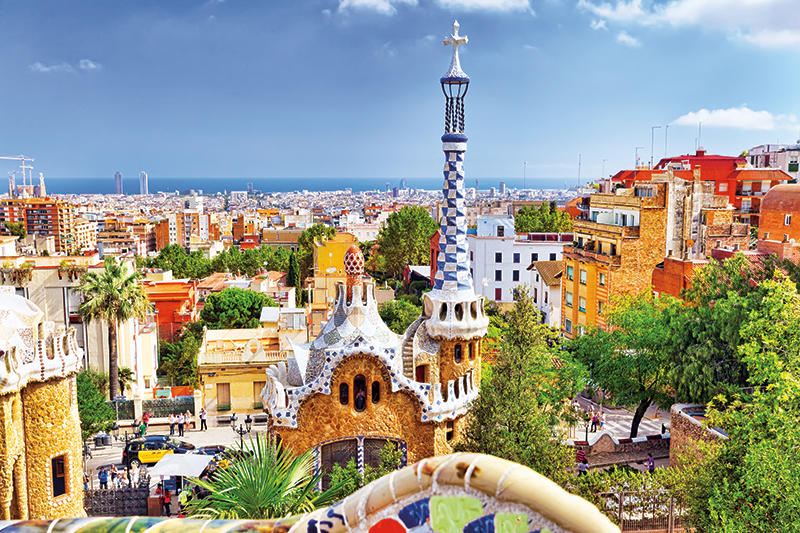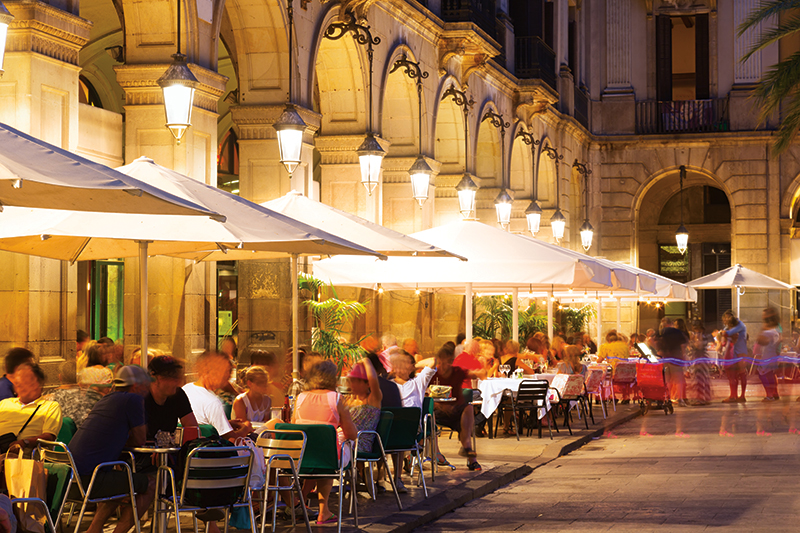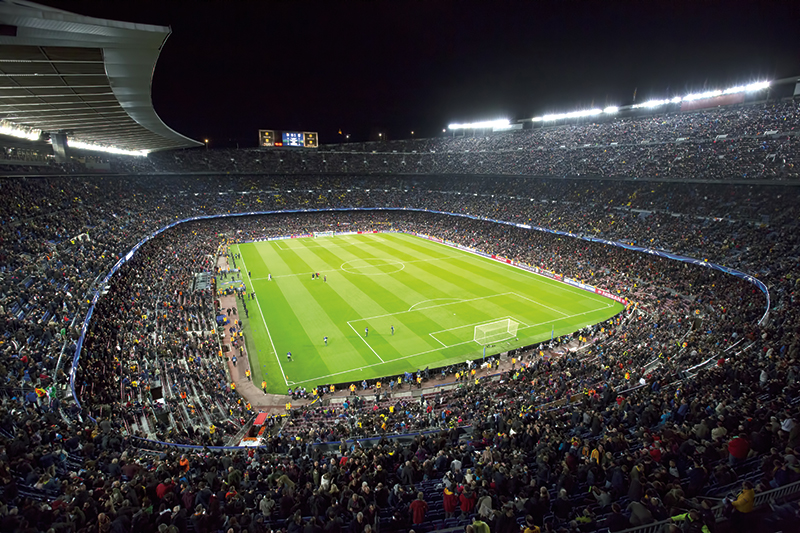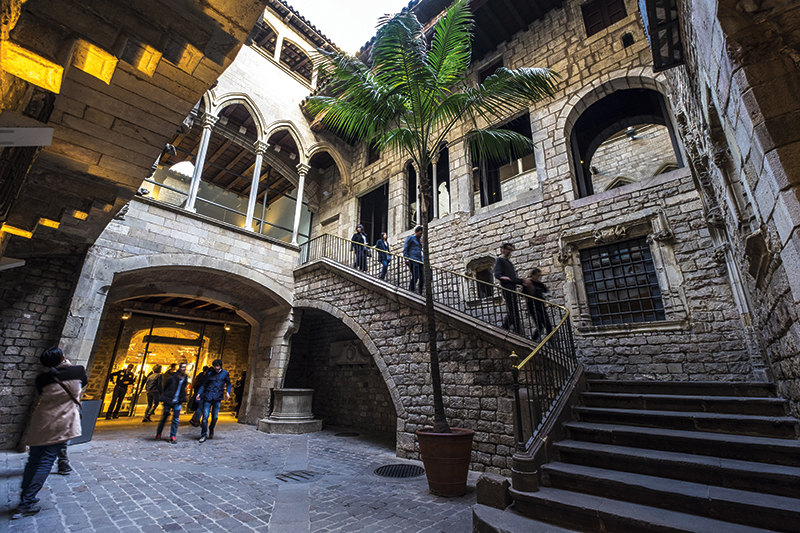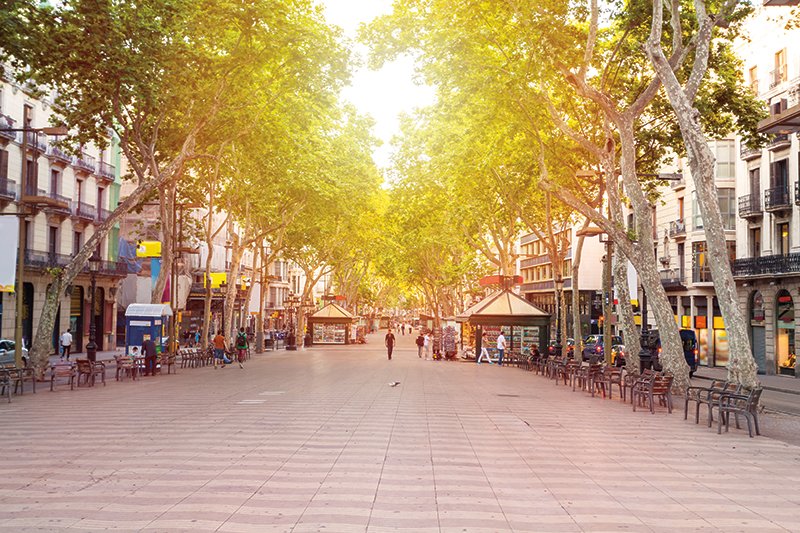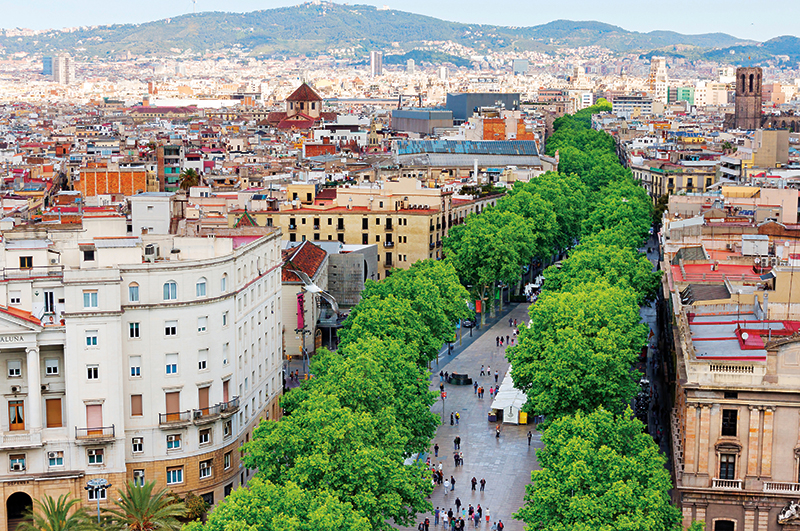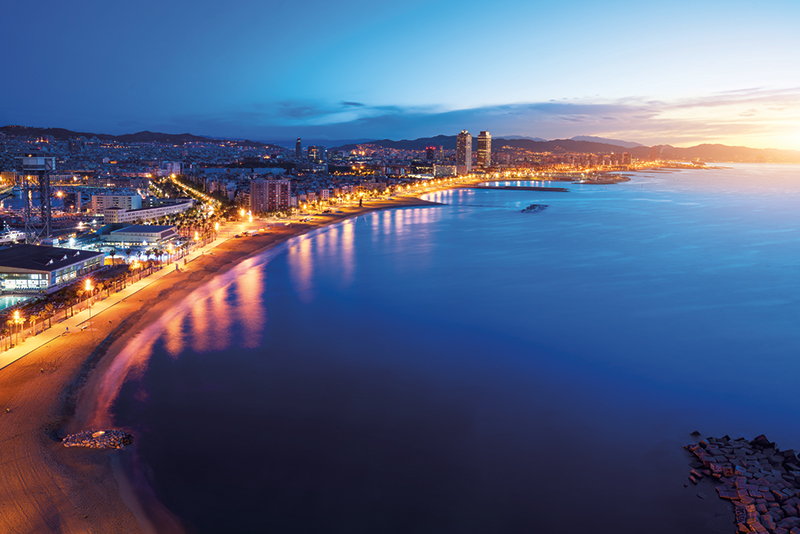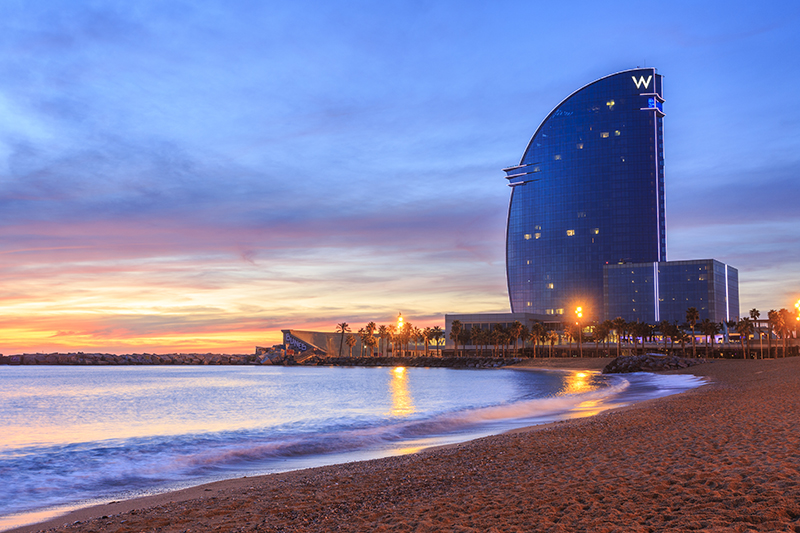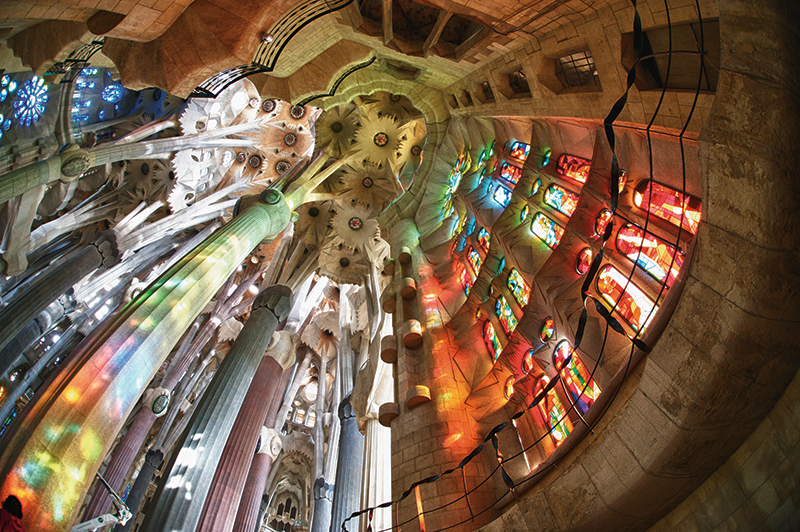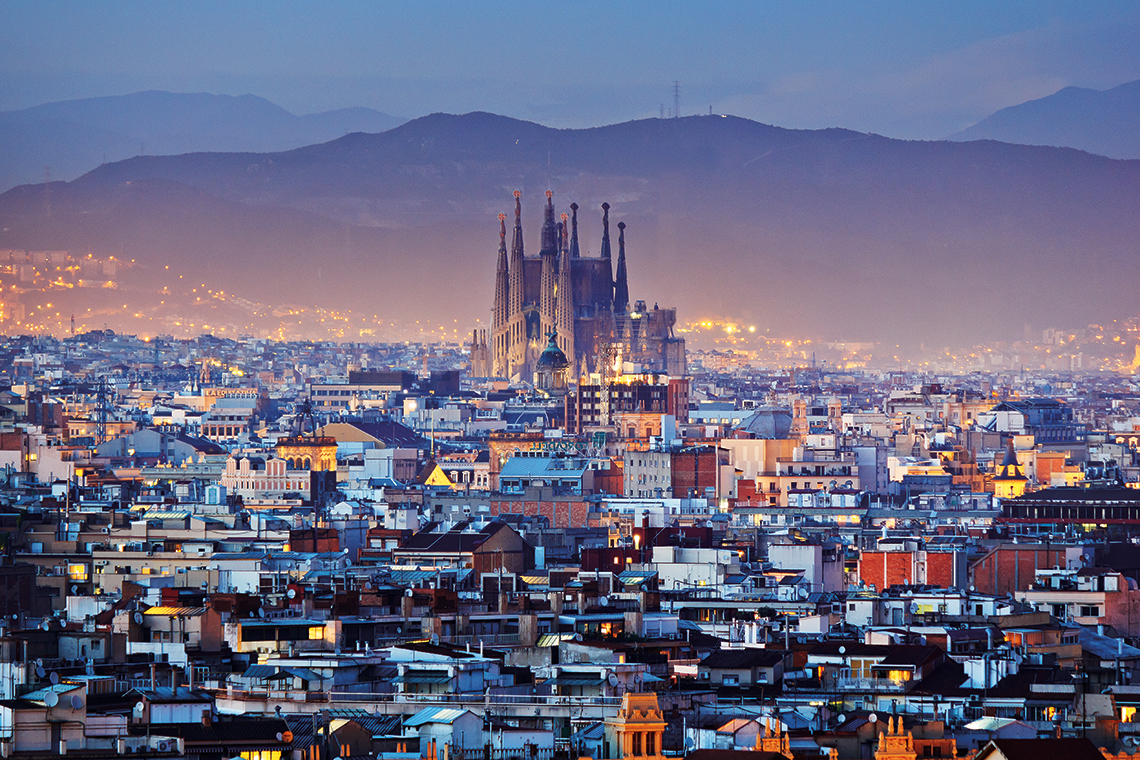
The phrase “There’s something for everyone” is admittedly overused. But it’s hard to think of a more apt excuse for wheeling it out than when describing the exceptional-in-every-way city that is Barcelona. If you’ll allow a comparison, the Spanish favourite is a bit like that kid in school who’s just, you know, annoyingly good at everything. But whereas that straight-A student that’s allergic to failure doesn’t always make that nerdy kid overly popular, in terms of tourist destinations, such a quality has the complete opposite effect.
Yes, Barcelona is, without a doubt, extremely beloved because of all its over-achieving ways. Today it holds the title of the most visited city in Spain, which is no mean feat, given how adored the rest of the country continues to be, especially within Europe, with its gorgeous capital Madrid, party island Ibiza and “cheap and cheerful” Benidorm. Not only that, it’s one of the top five visited cities in the whole of Europe – with more than eight million tourists/visitors a year – and even cracks the top 20 globally. Very impressive – but not surprising if you’ve been.
The tricky part is beginning to explain why. And not because it’s a struggle to come up with reasons, but rather, a headache to whittle them down.
Firstly though, of course, the architecture might be one of the premier attractions. As if those famous blue skies need any extra assistance, visitors are spoiled for visual treats, with the pastel azure becoming a beautiful backdrop to equally stunning and world-renowned buildings.
The most iconic, of course, is Sagrada Família. The famously unfinished Roman Catholic church, designed by legendary architect Antoni Gaudí — who died before completing the huge structure that combines Gothic and curvilinear Art Nouveau forms – continues to be worked on even today, and is about 70 per cent complete. Artistry in motion, indeed.
A real pain to get into – with security airport-tight, and strict rules on showing skin, regardless of the sweltering heat – but it’s well worth the booking and ensuing effort, as your 12 Euro ticket gets you inside one of the world’s most uniquely breathtaking churches. It gets busy, as you’d expect, but the atmosphere inside truly is something special, and not a visit to even consider skipping on your trip.
Sagrada Familia, and many other famous structures – far too many to possibly list – led to Barcelona becoming the first and so far only city in the world to be awarded a prestigious Royal Gold Medal for architecture by the Royal Institute of British Architects – a medal which is traditionally given to one or a group of architects. It is older than Rome, so their ancestors certainly put the work in, and locals continue to innovate and impress in this field. (Trivia: Barcelona was also nearly home to the Eiffel Tower, but Gustave Eiffel’s original plan was rejected by Spain as too radical.)
Continuing its straight-A grades in other subjects, National Geographic also voted the capital of Spain’s Catalonia region as “Best Beach City.” Seven lively beaches gloriously dominate Barcelona’s coastline. Here, families co-exist harmoniously alongside bachelor and bachelorette parties sleeping off their wild celebrations the night before. Whatever your purpose, these beaches are the best place to take in the Mediterranean, for sure.
Barcelona can also help if you want to spend some money. The Old Town, Ciutat Vella, is where the shopping mecca Portal de l’Àngel has an average of 150,000 shoppers a day looking for designer items, bags, jewelery – you name it. On a sour note, the city does have a problem with thieves, pickpockets in particular, so visitors are encouraged to keep their wits about them because of this. Especially, it would seem, on La Rambla, the city’s most legendary – and notoriously crowded – street, near the Gothic Quarter. The tree-lined pedestrian street stretches for about two-thirds of a mile and offers a seemingly endless choice of markets, bars, restaurants – Tapas whenever you like, although not during siesta, of course – and shops, shops, eternal shops. Almost impossible to avoid, and impossible not to enjoy, unless you’re of a claustrophobic disposition.
That’s it surely; otherwise Barcelona would get a big head, right? No, not quite. We haven’t even got to the urban parks – 68 in total – which cover more than 10 per cent of the city, creating a jaw-dropping 195 square feet of park area per inhabitant of a city with a population of 1.602 million. Parc de Collserola remains the largest metropolitan park in the world with an area of nearly 33 square miles – for context, practically dwarfing New York’s Central Park, times 22.
However, Park Güell is really spectacular, and the perfect place to see some of Gaudi’s finest work, amongst natural beauty, wonderful views and a satisfying walk. Has any other one person had such a vast influence on one city than Gaudi has had on Barcelona? It’s awe-inspiring. Some of the park is public, but there are other bits that need booking in advance due to high demand, although there is still plenty to see for free.
So, unbeaten in architecture, beaches, parks and nightlife, Barcelona really does join the exceptional achievers list; and that’s before even mentioning the 99,000-capacity Camp Nou stadium – legendary soccer club Barcelona FC’s home stadium. It’s the largest soccer stadium in Europe, and second biggest in the world. There are also the museums, 55 if you’re counting, with Museu Picasso particularly recommended if you want to brush up on your Pablo paintings and take a break from Gaudi.
With something for everyone, city grades understandably don’t come much higher than this. When it comes to cities that have it all, Barcelona sits at the top of the class.


